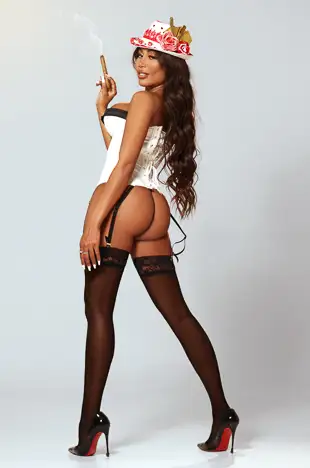Enfield Town, also known as Enfield, is the historic town centre of Enfield, in the London Borough of Enfield and before 1965 in the county of Middlesex. It is north-northeast of Charing Cross. The area is identified in the London Plan as one of 35 major centres in Greater London.
History
Historically, Enfield was a collection of small communities spread around the royal hunting grounds of Enfield Chase. At the time of the Domesday Book, the area was spelt 'Enefelde', and had a priest who almost certainly resided in St. Andrew's Church. By 1572 most of the basic street layout had been completed. The village green later became the historic marketplace between the church and where the fountain now stands. A market is still operated in this area, which is owned by the parish charity. Its name most likely came from the Anglo-Saxon language ''Ēanafeld'' or similar, meaning "open land belonging to a man called Ēana" or "open land for lambs".
Notable Persons, Places, and Events
The parish church, on the north side of the marketplace, is dedicated to St Andrew. There is some masonry surviving from the thirteenth century, but the nave, north aisle, choir and tower are late fourteenth century, built of random rubble and flint. The clerestory dates from the early sixteenth century, and the south aisle was rebuilt in brick in 1824. Adjacent to the church is the old school building of the Tudor period, Enfield Grammar School, which institution expanded over the years, becoming a large comprehensive school from the late 1960s.
=Enfield Palace=
A sixteenth century manor house, known since the eighteenth century as Enfield Palace, is remembered in the name of the Palace Gardens Shopping Centre (and the hothouses on the site were once truly notable; see below). It was used as a private school from around 1670 until the late nineteenth century. The last remains of it were demolished in 1928, to make way for an extension to Pearson's department store, though a panelled room with an elaborate plaster ceiling and a stone fireplace survives, relocated to a house in Gentleman's Row, a street of sixteenth- to eighteenth-century houses near the town centre.
=Enfield Market=
In 1303, Edward I granted a charter to Humphrey de Bohun, and his wife to hold a weekly market in Enfield each Monday, and James I granted another in 1617, to a charitable trust, for a Saturday market.Ford (1873) p.101 The Market was still prosperous in the early eighteenth century, but fell into decline soon afterwards. There were sporadic attempts to revive it: an unsuccessful one of 1778 is recorded, Pam (1990) pp.226 and in 1826 a stone Gothic market cross was erected, to replace the octagonal wooden market house, demolished sixteen years earlier. In 1858, J. Tuff wrote of the market "several attempts have been made to revive it, the last of which, about twenty years ago, also proved a failure, It has again fallen into desuetude and will probably never be revived". “
However the trading resumed in the 1870s. In 1904 a new wooden structure was built to replace the stone cross, by now decayed. The market is still in existence, administered by the Old Enfield Charitable trust.
=The Enfield Fair=
The charter of 1303 also gave the right to hold two annual fairs. one on St Andrew's Day, and the other in September. Ford (1873) pp. 102 The latter was suppressed in 1869 at the request of local tradesmen clergy, and other prominent citizens, having become, according to the local historian Pete Eyre "a source of immorality and disorder, and a growing nuisance to the inhabitants".Ford (1873) pp. 104-5
=The New River=
The New River (England), built to supply water to London from Hertfordshire, runs immediately behind the town centre through the Enfield Town Park, which is the last remaining public open space of Enfield Old Park. The Enfield Loop of the New River also passes through the playing fields of Enfield Grammar School, and this is the only stretch of the loop without a public footpath on at least one side of it.
=Hothouses=
Enfield was the location of some of the earliest successful hothouses, developed by Dr Robert Uvedale, headmaster of both Enfield Grammar School and the Palace School. He was a Cambridge scholar and renowned horticulturalist; George Simonds Boulger writes of Uvedale in the ''Dictionary of National Biography'', 1885-1900, Volume 58: As a horticulturist Uvedale earned a reputation for his skill in cultivating exotics, being one of the earliest possessors of hothouses in England. In an ''Account of several Gardens near London'' written by J. Gibson in 1691 (''Archæologia'', 1794, xii. 188), the writer says: 'Dr. Uvedale of Enfield is a great lover of plants, and, having an extraordinary art in managing them, is become master of the greatest and choicest collection of exotic greens that is perhaps anywhere in this land. His greens take up six or seven houses or roomsteads. His orange-trees and largest myrtles fill up his biggest house, and … those more nice and curious plants that need closer keeping are in warmer rooms, and some of them stoved when he thinks fit. His flowers are choice, his stock numerous, and his culture of them very methodical and curious.'
=John Keats=
The poet John Keats went to progressive Clarke's School in Enfield, where he began a translation of the ''Aeneid''. The school's building later became Enfield Town railway station until it was demolished in 1872. The current building was erected in the 1960s. In 1840 the first section of the Northern and Eastern Railway had been opened from Stratford, London to Broxbourne. The branch line from Water Lane to Enfield Town station was opened in 1849.
=Silver Street White House=
The White House in Silver Street is presently a doctor's surgery, but it was formerly the home of Joseph Whitaker, publisher and founder of Whitaker's Almanack who lived and died there from 1820 to 1895. (Inscription on Blue Plaque on The White House, Silver Street, Enfield.)
=World's First ATM Machine=
Enfield Town had the world's first ever cash machine or automatic teller machine. It was installed at the local branch of Barclays Bank on 27 June 1967 and was opened by actor Reg Varney.
=The Civic Center=
The Town also houses the borough's Civic Centre, the headquarters of the borough administration at which Council and committee meetings are also held.
=August 2011 Riots=
On Sunday 7 August 2011 after rioting spread from Tottenham riots 2011 vehicles, including a police car were attacked and several shops and business were targeted in the town centre. Most businesses remained closed on Monday 8th and many were not repaired for several weeks after the rioting. The mayor of London, Boris Johnson, later visited the town centre to receive people's views of the riots. [http://www.haringeyindependent.co.uk/news/topstories/9182575.Police_car_trashed_by_Enfield_Town_rioters/ News report] Retrieved 12 August 2011 Enfield Town, also known as Enfield, is the historic town centre of Enfield, in the London Borough of Enfield and before 1965 in the county of Middlesex. It is north-northeast of Charing Cross. The area is identified in the London Plan as one of 35 major centres in Greater London.
Economy
Enfield Town centre underwent major redevelopment work, completed in Autumn 2006. A large extension to the existing shopping centre was built, under the name Palace Exchange. Many branches of chain stores already existing in Enfield Town centre were relocated to the new extension, and there are some completely new stores. In the summer of 2011 an abandoned building (previously a bingo club) on Burleigh way in the town centre was demolished and replaced with brand new apartments which were completed in the spring of 2012. There is also space for six commercial units and public art. Another two new apartments are currently in the building process on Silver Street and Southbury Road. There are also plans for a fourth new block of flats to be built which will go ahead if the council allow it. Enfield Town, also known as Enfield, is the historic town centre of Enfield, in the London Borough of Enfield and before 1965 in the county of Middlesex. It is north-northeast of Charing Cross. The area is identified in the London Plan as one of 35 major centres in Greater London.
Transport and locale
Nearest places
{{Geographic Location
|title = '''Neighbouring towns, villages and places.'''
|Northwest = Botany Bay, London
|North = Gordon Hill, London
|Northeast = Forty Hill
|West = Oakwood, London
|Centre = Enfield Town
|East = Ponders End
|Southwest = Southgate, London
|South = Bush Hill Park and Winchmore Hill
|Southeast = Edmonton, London
}}
Nearest railway stations
* Enfield Town railway station
* Enfield Chase railway station
Buses
Enfield Town has excellent bus links.London Buses routes London Buses route 121, London Buses route 191, London Buses route 192, London Buses route 231, London Buses route 307, London Buses route 313, London Buses route 317, London Buses route 329, London Buses route 377, London Buses route W8, London Buses route W9, London Buses route W10, night route London Buses route N29, and non-London route 610 serves Enfield Town. Enfield Town, also known as Enfield, is the historic town centre of Enfield, in the London Borough of Enfield and before 1965 in the county of Middlesex. It is north-northeast of Charing Cross. The area is identified in the London Plan as one of 35 major centres in Greater London.
References
Enfield Town, also known as Enfield, is the historic town centre of Enfield, in the London Borough of Enfield and before 1965 in the county of Middlesex. It is north-northeast of Charing Cross. The area is identified in the London Plan as one of 35 major centres in Greater London.
Bibliography
Category:Areas of London
Category:Districts of Enfield
Category:Market towns in London
Category:Districts of London listed in the Domesday Book
Category:Major centres of London
Category:Post towns in the EN postcode area












































































































































































